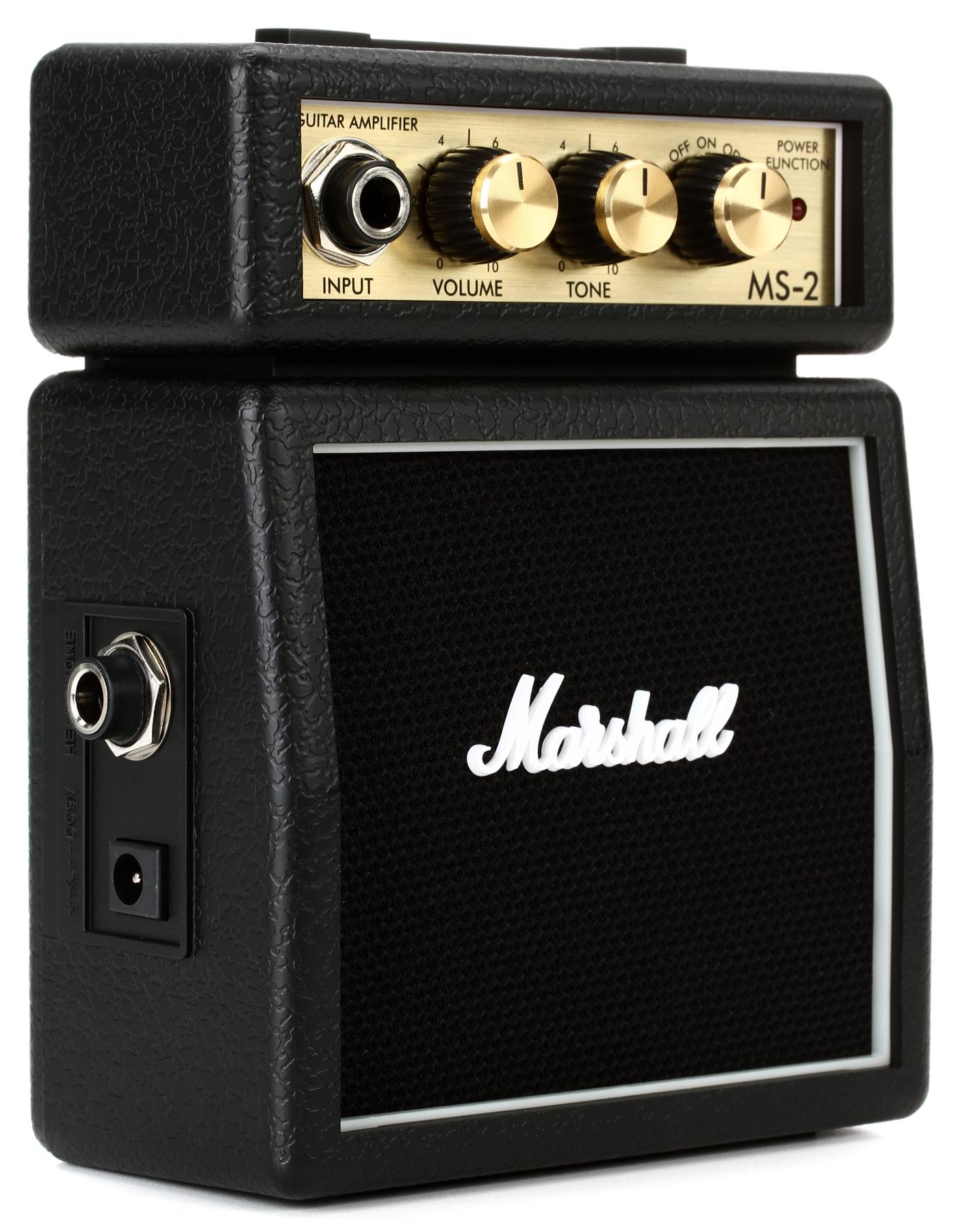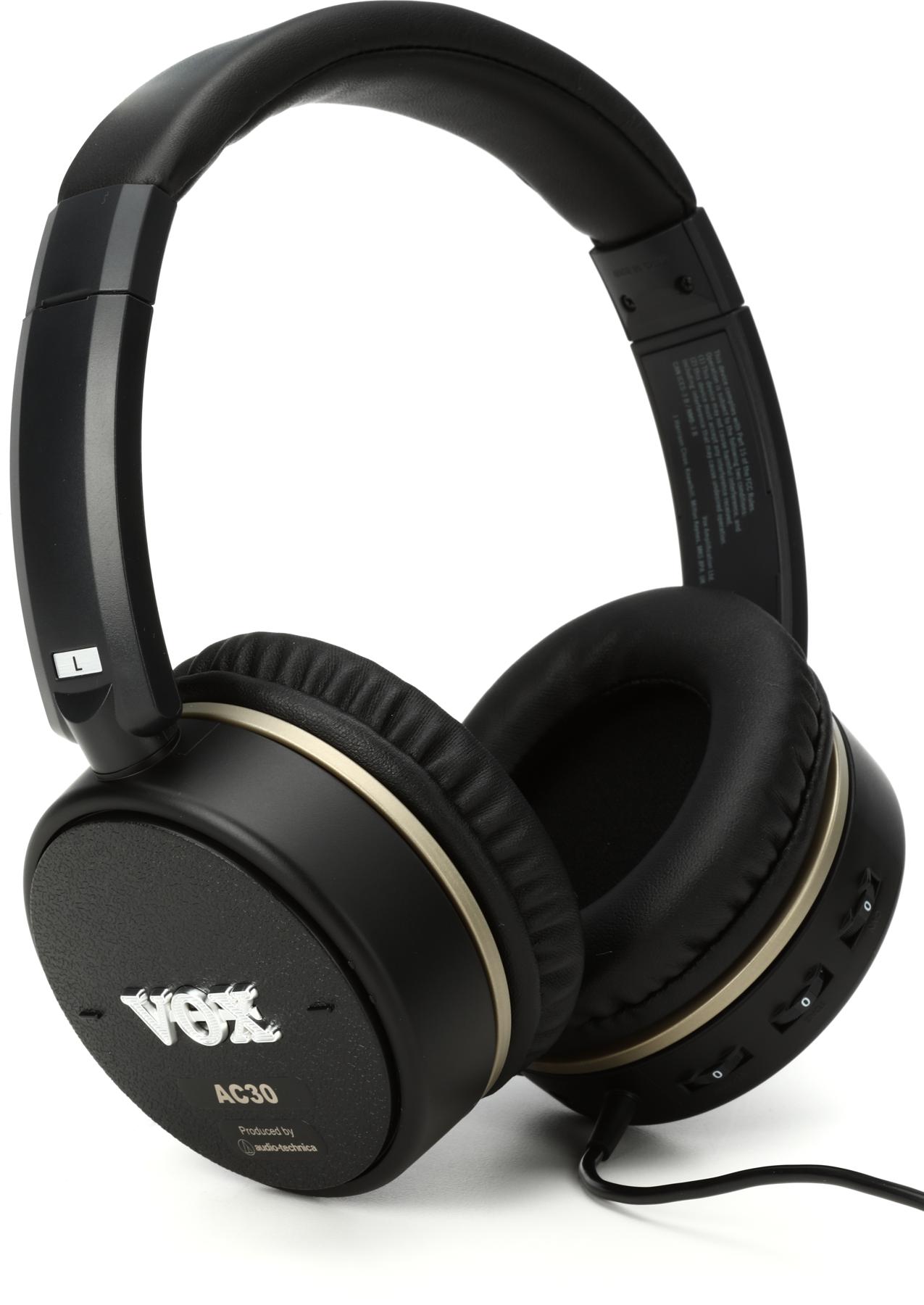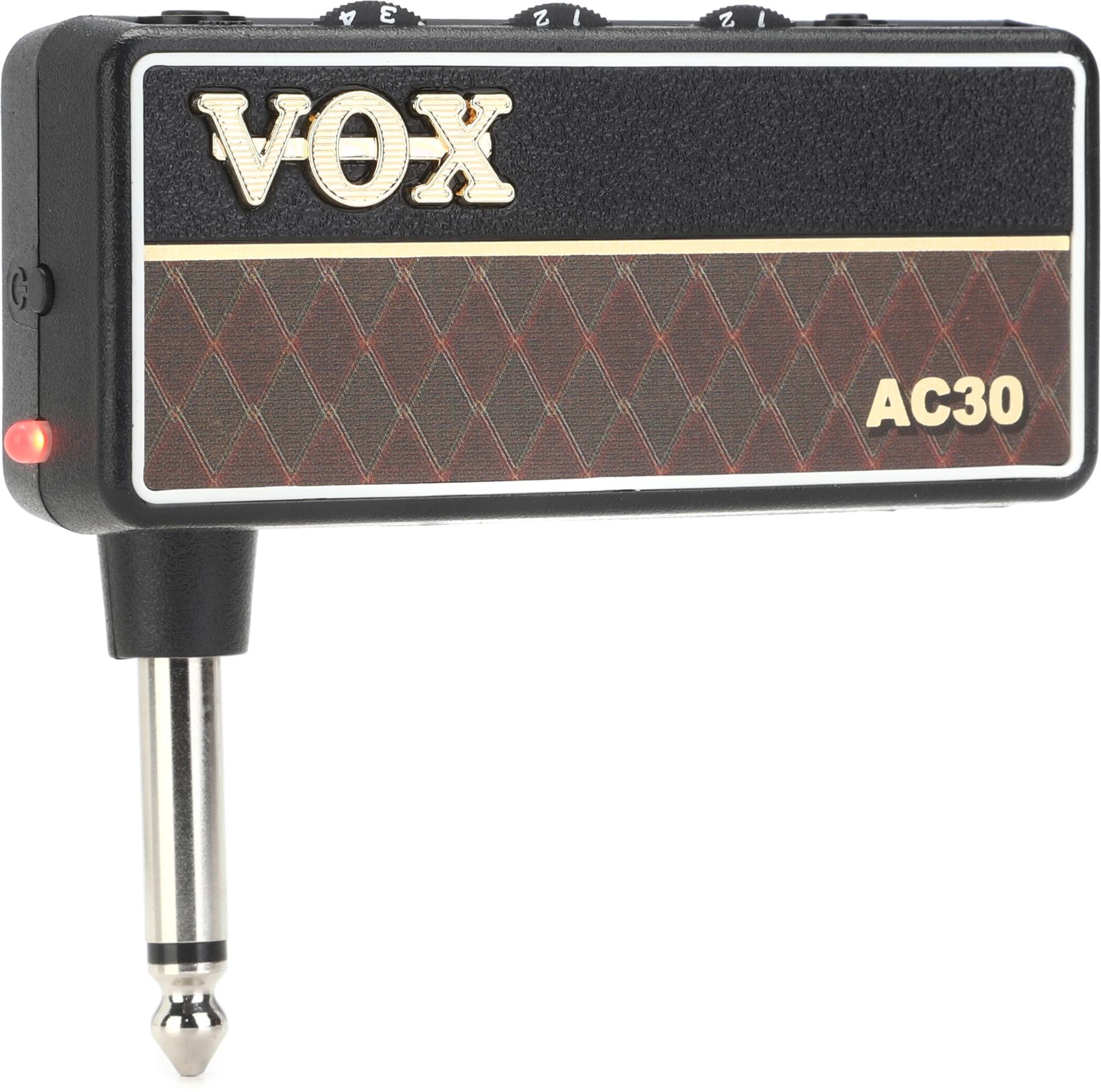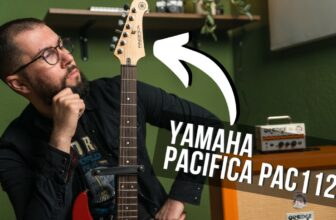How To Play Electric Guitar With Headphones (6 Options)
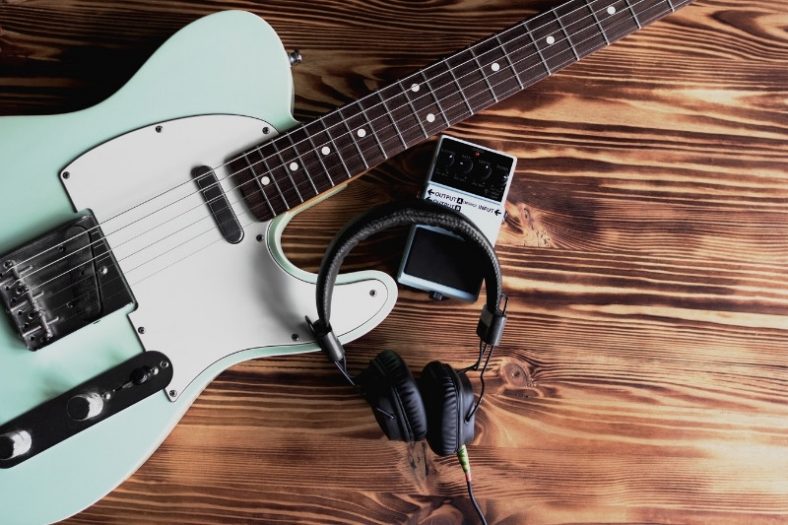
Having the option to play electric guitar with headphones comes in very handy if you are living in an apartment, traveling, or in any situation where you do not want to disturb others. Although you can not simply plug headphones into a guitar and play, there are several options to make it happen.
Unfortunately, you can not simply plug a headphone jack into a guitar and expect it to work. This is because you need an amp to convert low-level signals to sufficient levels to hear that sound. All the methods may differ, but the principle is the same: The signal travels from the guitar to an amp before it gets to your ears through the headphones.
In this guide, I will talk about the 6 most common ways to play guitar with headphones. You need an amp or an amp simulator to have a proper tone. Then you can plug your headphones into the amp or the device that simulates an amp to hear your guitar’s sound through headphones.
Contents
Can you plug headphones into an electric guitar?
You can not play electric guitar through headphones by simply plugging the headphone into the guitar. You can use either an amp, a computer, a headphone amp, multi-fx pedals, or a MIDI guitar processor, which you can plug into the headphones.
how to play electric guitar With Headphones?
1. Plug Into Your Guitar Amp
The most common way to play electric guitar with headphones is by plugging the headphones into the guitar amp. Most modern amps feature 3.5mm headphone jacks (1/8″ standard headphone size) or a 6.3mm (1/4″) output which is the same size jack as your guitar cable.
By connecting your guitar and the headphones to the amp, you can easily play your guitar with the sound coming out from the headphones for private sessions. You can still shape your tone through the amp, adding an overdrive or any kind of effect or adjusting the volume and EQ settings.
If your headphone plug and the headphone port on the amp do not match in size, then you will have to use an adapter to match them. A simple 3.5 mm to 6.3 mm audio adapter would get the job done.
An important tip is to bring down the volume before connecting the headphones and gradually turning it up to avoid your ears getting blasted by the high volume levels. You should also make sure that the port you are connecting your headphones to is a headphones port instead of guitar speakers port, again, to avoid getting blasted with high volume levels.
Using an amp is the easiest and most convenient way to play guitar through headphones. Of course, you need an amp with a headphone port to use this method, and also, it may not be the easiest solution while you are traveling.
However, there are mini amps today which are the ideal solution to play through headphones wherever you are as they are highly portable, provide great sound quality, and can work with batteries. The first one to come to mind is the Marshall MS2 Micro, which is one of the best mini-amps today with its 1 Watt output power, overdrive, clean channels, volume and tone knobs, as well as the headphone jack.
2. Connect To A Computer (Audio interface, DAW…)
Connecting your guitar to a computer or a smart device is another popular way of playing electric guitar through headphones. For this method, you will need an audio interface that converts the guitar signals to computer language. Then you can connect headphones to your computer or smart device.
Having an audio interface is a great idea for private practice and recording sessions with headphones. Also, using a smart device or a computer gives you so much versatility that you can use many different plug-ins, DAWs, and applications for recording, practicing, adding different effects, looping, and many more.
When you use an audio interface, you can directly plug your headphones into the computer or the audio interface itself.
In terms of price, audio interfaces come in a wide variety of prices. They are not the most budget-friendly devices compared to other gear on the list, but still, the versatility they offer to guitarists is impressive. You can shape your tone, record, practice, jam, and do many things with an audio interface and a good DAW.
There are many audio interfaces to choose from, all with different specs, versatility, and prices. You can check this article to find the most suitable one for yourself.
After plugging in all the hardware, you will need to install a DAW or an application to play guitar through headphones. There are many different paid or free DAWs and plug-ins to choose from, which you can learn more about here.
3. Use A Headphone Amp
Another practical way to play guitar with headphones is to use a headphone amp. These are small, low-powered devices that increase the low-voltage signals to sufficient levels. Using a headphone amp is the most budget-friendly and easiest way to play guitar with headphones.
The headphones amp are tiny and portable devices, often with a 3.5 mm headphone port and a 6.3 mm guitar jack. Most headphone amps come with multiple headphone outputs and independent level knobs. So, they are good solutions if you want to share your practice and jam sessions with others.
The sound quality and overall tonal versatility you get are not great, but these are great devices to use while traveling, picnicking, camping, and anywhere on the go.
The Donner DEL-4 is a great headphone amp that comes with four channels and four independent-level controls. For a small price, you can get this device to play your guitar easily with a pair of headphones.
4. Guitar Headphones
Guitar headphones are headphones with a micro guitar amp inside that you connect to your guitar and play through headphones. They come with built-in effects and options to shape your sound as you like and are one of the easiest ways to play guitar with headphones.
The guitar headphones are ideal for private practice sessions and practicing while traveling. With just a pair of headphones, you get the amp, the effects, and the tonal options wherever you are.
Of course, as these are specialized products, the price tags are relatively higher on average compared to other gear on the list. But, they offer great sound quality as well as overall practicality for guitarists.
One of the best guitar headphones is the Vox VGH AC30 model, which comes with reverb, chorus, and delay effects as well as valve reactor amp circuit technology for a more dynamic sound, a built-in AUX IN jack, and the option to turn it off to use it as a passive pair of headphones for casual music listening.
5. Multi-Effects Pedals
Multi-effects pedals process the guitar signal with effect and tonal preferences to create an amp-like output tone. Most multi-effects pedals feature headphone jacks and are also quite versatile devices to use on different occasions like gigs or in the studio.
Multi-effect pedals receive the signals from the guitar and shape the sound as you like with hundreds of different effect and tonal adjustment options they feature. They offer an amp-like tone in the end, thanks to their rich adjustment options.
Additionally, some of them can be connected to computers and Macs for extra customization and functions. Plus, they can be used as audio interfaces. So, you can also connect the multi-effects pedal and the headphones to the computer to play guitar with headphones, in case you have a multi-effects pedal without a headphone port.
There are hundreds of different multi-effects pedals on the market today with different features, versatility, and prices. You can check out our article on the best Multi-Effects Pedals And Processors to learn more about them and find the ideal one.
6. Guitar Headphones Amps
Guitar headphones amps are specialized headphones amps for guitars that come with built-in effects, a headphone port, and a guitar jack. They are highly portable and straightforward devices with reasonable price tags to make guitars headphones-friendly.
The guitar headphone amps are headphone amps specialized for guitars with the addition of some effects and tonal adjustment options. Most of them also feature AUX IN ports to connect a music player to play along with backing tracks or songs.
A great guitar headphones amp is the VOX AP2AC amPlug 2 AC30 which comes with three ranges of built-in effect modes, including reverb, delay, and chorus. All effects also have three versions which equip you with 9 effects in total. Plus, there are different models with different effect options, such as the classic rock, metal, blues, clean, lead, and bass models.
The device works with batteries and offers up to 17 hours of battery life. Overall, it is a great, budget-friendly, straightforward, and portable way of using headphones when playing guitar.
Can you use Bluetooth Headphones for Electric Guitar?
Using Bluetooth headphones for electric guitars is not a common way due to latency issues. The Bluetooth connection is not fast enough to play real-time guitar without lag, which makes it very hard to play. But, some guitar headphone amps come with wireless transmitters to achieve cable-free connection.
Is it okay to practice with Headphones?
Practicing with headphones is a great idea if you are living in an apartment. To avoid sound disturbances, headphones come in handy. Playing with headphones at moderate volumes is more than enough for practice.
Of course, the sound you get from amps is often much better than the sound you get from headphones. But, for practice sessions, the sound quality is not as important as you are on the stage. So, playing with headphones is the perfect way for home practice sessions.
Conclusion
Playing electric guitar with headphones is a life-saver for most of us living in apartments with families, flatmates, and-or neighbors. In order not to disturb anyone, playing guitar with headphones instead of roaring amps is highly important.
Luckily, there are different ways to play electric guitar with headphones. You can use your amp, multi-effects processor, audio interface, headphones amp, specialized guitar headphones, guitar headphones amp, or a MIDI processor to connect your headphones to your guitar.
Each option has advantages and disadvantages, which you can explore to find the most suitable way for you. Whichever method you choose, you can have your private practice sessions without disturbing anyone.

